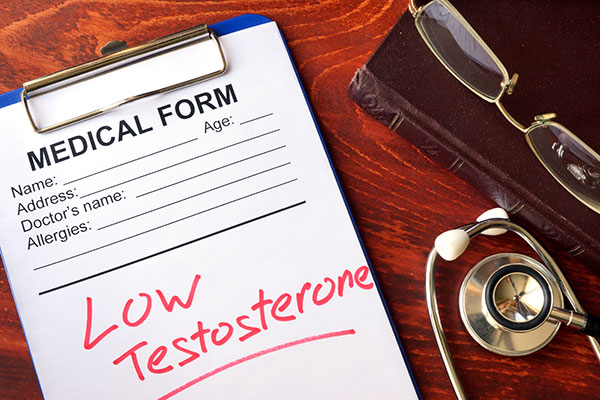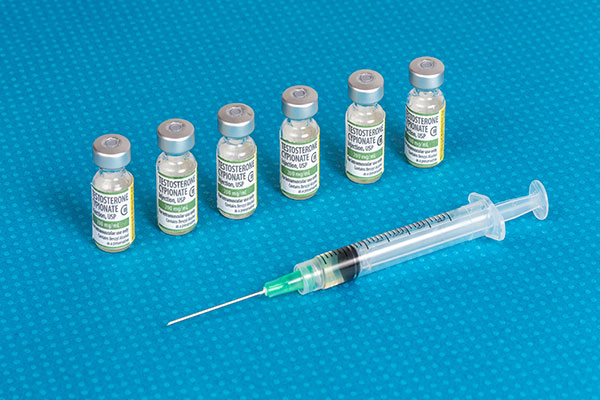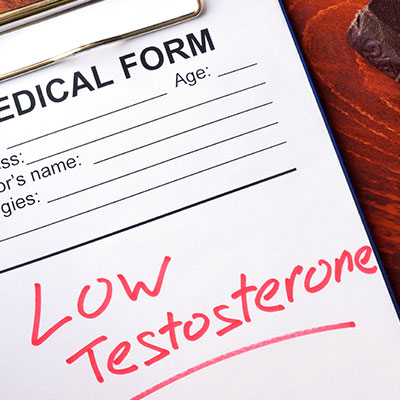List of Disease Caused by Testosterone Deficiency
Contents
- Can Testosterone Deficiency Lead to Disease?
- List of Disease Caused by Testosterone Deficiency
- Can Testosterone Therapy Lower Your Risk of Disease?
- Other Benefits of Testosterone Therapy
- Can Testosterone Therapy Lower the Risk of Disease in Women?
- How Do I Lower My Risk of Disease by Getting Testosterone?
- What Does Medical Research Say About Low Testosterone and Increased Risk of Disease?
Can Testosterone Deficiency Lead to Disease?
Having a testosterone deficiency can put you at greater risk for certain diseases and conditions.
The list of diseases associated with having age-related testosterone deficiency, also more simply known as “low testosterone,” can be long and varied. Testosterone is a vital hormone. While it is the primary male hormone, women’s bodies make and need testosterone as well.
In men, testosterone levels peak at around the age of 20. After that, it is a downward slide that finds most men between the ages of 35 and 65 suffering from low testosterone to some degree. There are many signs and symptoms of low testosterone. Here are some of the more common signs that you may be suffering from age-related testosterone deficiency:
- Low sex drive
- Weight gain
- Inability to build lean muscle even when working out
- Difficulty with erection
- Low sperm count
- FatigueMemory loss and other cognitive difficulties
- Unexplained loss of hair
- Hot flashes
- Low bone density
Having low testosterone not only can cause the above list of symptoms, but it can also put you at higher risk for several diseases. Since testosterone is very closely related to strength, energy, and metabolism, the risk of acquiring many so-called “metabolic diseases,” such as heart disease and diabetes, increases greatly in patients with low testosterone.
Studies have shown that men with low testosterone are also at increased risk of developing Non-alcoholic fatty liver disease (NAFLD). NAFLD is a condition where there is excess accumulation of triglycerides in the liver in the absence of excess alcohol consumption.
List of Disease Caused by Testosterone Deficiency
The list of diseases or conditions that could be related to low testosterone include:
- Diabetes
- Metabolic syndrome
- Obesity
- Insulin resistance
- Heart disease
- Hypertension
- Infertility/low sperm count
- Osteoporosis
- Depression
- AnxietyErectile dysfunction
- Sleep Apnea
- Alzheimer’s disease
- Liver disease
- Some forms of cancer
Can Testosterone Therapy Lower Your Risk of Disease?
If you have been diagnosed with low testosterone, the best way to reduce your symptoms of low testosterone, lessen your risk of disease, and improve your overall health is with prescription testosterone therapy.
Testosterone replacement therapy is designed to bring men suffering from age-related testosterone deficiency back into the more normal range.
Testosterone therapy is not prescribed specifically as a way to reduce your risk of acquiring the diseases mentioned on this page. However, since testosterone therapy can reduce or eliminate several of the risk factors that lead to the conditions mentioned, it does lessen your risk of developing metabolic syndrome, diabetes, liver disease, and the other illnesses mentioned.
Other Benefits of Testosterone Therapy
In addition to lowering your risk of developing the disease and conditions discussed, testosterone therapy can:
- Reduce belly fat
- Improve your sex drive and sexual performance
- Increase stamina and increase your energy level
- Improve your memory and other cognitive abilities
- Improve your ability to build muscle
- Improve sleep
- Lessen your risk of developing anxiety and depression
While the main goal of testosterone replacement therapy is to restore concentrations of testosterone in the blood, there exists considerable evidence that, in addition to resolving the symptoms of low testosterone, testosterone replacement reduces the risk of developing the testosterone-related diseases listed above.
Can Testosterone Therapy Lower the Risk of Disease in Women?
Women’s bodies make and need testosterone as well. Just as in men, having a lower than normal testosterone level increases the risk of some of these same conditions in women.
Just as in men, maintaining adequate supplies within the normal range of testosterone in the blood for women is critical to overall health and wellness. As in men, testosterone in women is necessary for sexual desire and performance. It also plays a critical role in cellular metabolism and, therefore, a women’s ability to maintain a proper lean muscle to fat ratio. Also, as in men, testosterone in women plays a role in cognition, mood, and maintaining healthy sleep patterns.
In fact, some of the most recent research seems to indicate that the reason why women are far more likely to develop Alzheimer’s disease later in life than men is due to the greater protection against dementia men receive by having more testosterone in their blood than women.
A recent study published in The Journal of Clinical Endocrinology & Metabolism found that postmenopausal women who were suffering from Alzheimer’s disease had below-normal testosterone levels and suggested that testosterone replacement could offer women a “neuroprotective effect.”
How Do I Lower My Risk of Disease by Getting Testosterone?
If you have low testosterone and want to lower your risk of low testosterone-related diseases and achieve all of the many other benefits of testosterone, you must get a prescription for testosterone therapy. Testosterone therapy is only legally available with a doctor’s prescription. Getting a legitimate prescription for testosterone therapy is not hard; in fact, it only takes these five simple steps:
- Step 1 – Fill out an online medical history form – This first step is indeed the only step in the process of getting a prescription for testosterone injections that can be done online.
- Step 2 – See a doctor – If your online medical history form indicates that you are a good candidate for testosterone therapy, the next step is to see your doctor. He or she will discuss your medical history in further detail, ask you more about your symptoms, and take a complete physical exam.
- Step 3 – Laboratory hormone testing – Once you have completed your physical exam, you will be referred to a laboratory to have the testosterone hormone levels in your blood tested.
- Step 4 – You will obtain a prescription for a program of testosterone injections – If the results of your laboratory tests show that you have a testosterone deficiency and are suffering from low testosterone, your doctor will prescribe a dosage of testosterone therapy to suit your needs and lifestyle.
- Step 5 – Your testosterone will be delivered to you – Your prescription for testosterone therapy will be forwarded to one of the pharmacies we work with that specializes in filling prescriptions for testosterone injections. The pharmacy will then deliver your testosterone therapy supplies to you.
What Does Medical Research Say About Low Testosterone and Increased Risk of Disease?
A 2015 study published in Cardiovascular Endocrinology & Metabolism drew a link between low testosterone and increased risk of developing liver disease, specifically, Non-alcoholic fatty liver disease (NAFLD). The study could not say for sure that the relationship was “casual,” however concluded that “Due to the growing obesity epidemic, NAFLD is the most common cause of chronic liver disease in the U.S.” [Since there is a definite link between low testosterone and obesity in males,] “our experimental and clinical data suggests that testosterone may help prevent or ameliorate NAFLD in males.
A 2010 study published in Trends in Endocrinology & Metabolism concluded, “Low testosterone in men is a risk factor for the metabolic syndrome and type 2 diabetes and is associated independently with individual components of the metabolic syndrome–visceral obesity, insulin resistance, hyperglycemia, hypertension, and dyslipidemia.”
Also, in 2010 meta-analysis (study of studies) published in Therapeutic Advances in Endocrinology and Metabolism, concluded “There is convincing evidence that low testosterone is an independent risk factor for the development of metabolic syndrome and type 2 diabetes in men. Furthermore, evidence is also accumulating that testosterone deficiency is a cardiovascular risk factor.”
This study went on to say that, “There are many recent reviews highlighting the important link between hypogonadism, metabolic syndrome, diabetes, and cardiovascular disease.”
Besides these studies that show links between low testosterone and increased risk of disease, there is a wealth of medical literature that speaks to the benefits of testosterone replacement therapy for not only lowering the risk of testosterone-related disease but in improving overall health.
A 2018 study concluded, “testosterone replacement therapy had multiple positive effects on affected men with [low testosterone]. Our long-term results showed a long-lasting improvement during the time [the subjects were on testosterone]. Authors concluded that long-term treatment had multiple benefits for affected the men.”
A study in 2014 on obese men with low testosterone and erectile dysfunction concluded, “Long-term testosterone replacement in men with low testosterone and ED reduces obesity parameters and improves metabolic syndrome and health-related quality of life.”
A recent landmark collective study known as the “Testosterone Trials” (TTrials) concluded that “The trials showed an improvement in all the aspects of sexual function and overall mood.”
The Trials were a coordinated set of seven placebo-controlled, double-blind trials in 788 men with a mean age of 72 years, designed to determine the efficacy of increasing the testosterone levels of older men with low testosterone through the use of testosterone replacement therapies.
The findings of the Testosterone TTrials were published in March of 2018. The key takeaways from the Trials were that for older men with low testosterone, testosterone treatment for one year:
- Improved all aspects of sexual function
- Improved strength and mobility
- Improved mood and depressive symptoms
- Markedly increased bone mineral density and estimated bone strength .
FAQ
- A decrease in libido or sex drive
- An overall feeling of reduced virility and vigor
- Changes in mood
- Erectile dysfunction
- Loss of stamina
- Loss of muscle tone
- Weight gain
- Loss of memory and other cognitive issues





